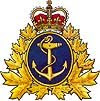
So I'm having a conversation with this West Coast gentleman the other day. He had recently bought a boat down in Washington State and was looking for information on licensing it and rendering it legal to operate in Canadian waters. The boat itself was around 30 feet, if I recall correctly.
We chatted about how he would have to clear customs and have the boat here in Canada, before Service Canada would license it. Then we discussed the navigational gear on the boat, as I have a habit of doing if the boat is 20 feet long or over. The reason for this of course, has to do with discovering whether the boat has a marine VHF radio or not. If so, then we can provide them with info on the requirement to have a Restricted Operator's Certificate (Maritime), in order to operate that radio in Canadian waters.
Turns out the boat had a radio fitted to it, but he was going to remove it. "Besides", he confided to me, "with the availability of cell phones these days, I suspect marine VHF radios are going to be on their way out pretty soon, right?"
Well... you could have knocked me over with a feather. So, we went over the approved procedures for distress signals on the water, which are as follows:
Distress Call:
Use:
- 2182 kHz (MF) or channel 16
- 156.8 MHz (VHF) DSC alert
- channel 70 (only for digital selective call system (DSC) type radios and where the service is offered)
Calling Procedures:
- "Mayday, mayday, mayday" signals immediate danger to persons or ships.
- "Pan-pan, pan-pan, pan-pan" signals an urgent message concerning the safety of persons or ships.
In these situations, please give the vessel's name and call sign, state the position of the vessel and describe the nature of the emergency.
Cellular Phones:
With a cellular phone, contact a Joint Rescue Coordination Centre directly or dial *16 for the Canadian Coast Guard Marine Communications and Traffic Services Centres.
NOTE: not all cellular providers offer the *16 service.
Contact your cellular provider to find out if the *16 service is accessible from your phone.
Remember that a cellular phone is not a substitute for a marine radio and is not an approved means of issuing a distress call.
Using a cellular phone does not alert other boats close to you that you are in distress.
Unlike VHF transmissions, some cellular phone signals cannot be followed back to your location by rescuers.
I spent a little time elaborating on the section dealing with cellular phones and how they are absolutely NOT RECOMMENDED for making emergency or distress calls. I then advised him that cell phones were not in any danger of supplanting VHF radios anytime soon. One of the main reasons is that cell phones on the water operate pretty much on a line-of-sight (LOS) range. Cell phone towers on land are placed for terrestrial cell phone usage, not waterborne activities. They operate in the UHF frequency range, which means an even higher frequency than a VHF radio.
As we ought to know by now, the higher the frequency, the shorter the range. So even under optimum conditions, cell phones have a shorter range. On the water their reception is spotty and unreliable at best. Not the type of system an intelligent being would want to entrust their very survival to.
After underlining their shortcomings, my caller kind of saw the error of his ways. I have to say "kind of" here, as I'm pretty sure he had no intentions of either hooking up his VHF radio or learning how to use it.
Left Coasters, boy...
They're a hard breed to reason with.
We chatted about how he would have to clear customs and have the boat here in Canada, before Service Canada would license it. Then we discussed the navigational gear on the boat, as I have a habit of doing if the boat is 20 feet long or over. The reason for this of course, has to do with discovering whether the boat has a marine VHF radio or not. If so, then we can provide them with info on the requirement to have a Restricted Operator's Certificate (Maritime), in order to operate that radio in Canadian waters.
Turns out the boat had a radio fitted to it, but he was going to remove it. "Besides", he confided to me, "with the availability of cell phones these days, I suspect marine VHF radios are going to be on their way out pretty soon, right?"
Well... you could have knocked me over with a feather. So, we went over the approved procedures for distress signals on the water, which are as follows:
Distress Call:
Use:
- 2182 kHz (MF) or channel 16
- 156.8 MHz (VHF) DSC alert
- channel 70 (only for digital selective call system (DSC) type radios and where the service is offered)
Calling Procedures:
- "Mayday, mayday, mayday" signals immediate danger to persons or ships.
- "Pan-pan, pan-pan, pan-pan" signals an urgent message concerning the safety of persons or ships.
In these situations, please give the vessel's name and call sign, state the position of the vessel and describe the nature of the emergency.
Cellular Phones:
With a cellular phone, contact a Joint Rescue Coordination Centre directly or dial *16 for the Canadian Coast Guard Marine Communications and Traffic Services Centres.
NOTE: not all cellular providers offer the *16 service.
Contact your cellular provider to find out if the *16 service is accessible from your phone.
Remember that a cellular phone is not a substitute for a marine radio and is not an approved means of issuing a distress call.
Using a cellular phone does not alert other boats close to you that you are in distress.
Unlike VHF transmissions, some cellular phone signals cannot be followed back to your location by rescuers.
I spent a little time elaborating on the section dealing with cellular phones and how they are absolutely NOT RECOMMENDED for making emergency or distress calls. I then advised him that cell phones were not in any danger of supplanting VHF radios anytime soon. One of the main reasons is that cell phones on the water operate pretty much on a line-of-sight (LOS) range. Cell phone towers on land are placed for terrestrial cell phone usage, not waterborne activities. They operate in the UHF frequency range, which means an even higher frequency than a VHF radio.
As we ought to know by now, the higher the frequency, the shorter the range. So even under optimum conditions, cell phones have a shorter range. On the water their reception is spotty and unreliable at best. Not the type of system an intelligent being would want to entrust their very survival to.
After underlining their shortcomings, my caller kind of saw the error of his ways. I have to say "kind of" here, as I'm pretty sure he had no intentions of either hooking up his VHF radio or learning how to use it.
Left Coasters, boy...
They're a hard breed to reason with.
















No comments:
Post a Comment